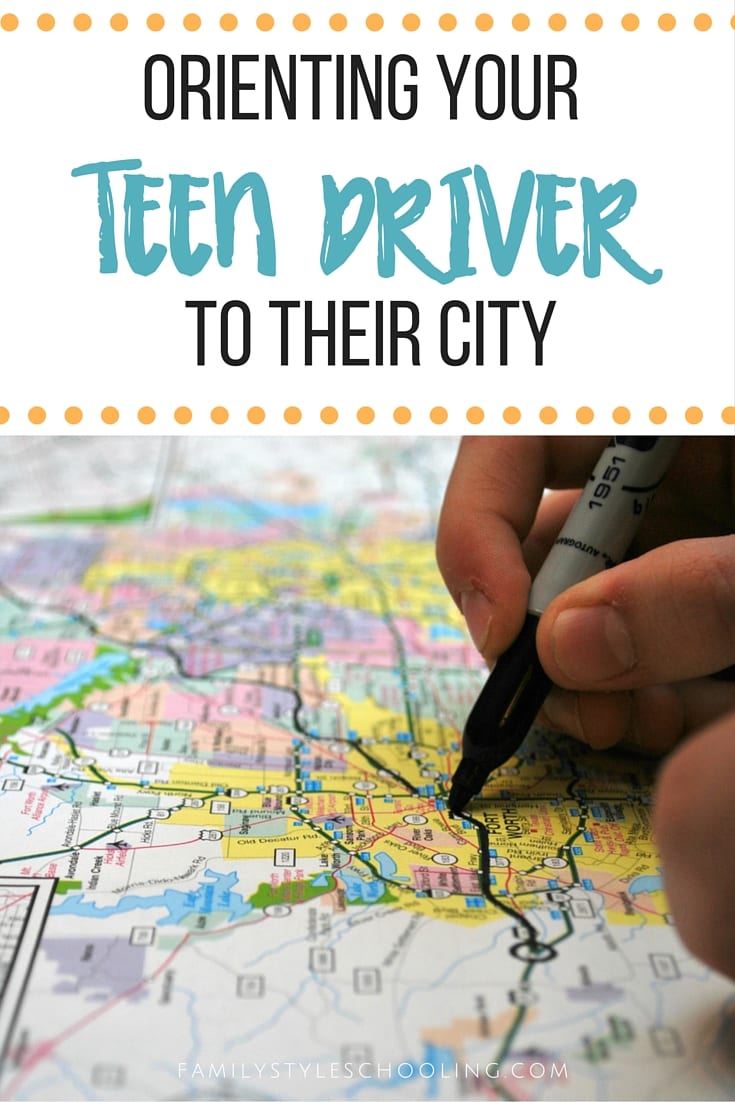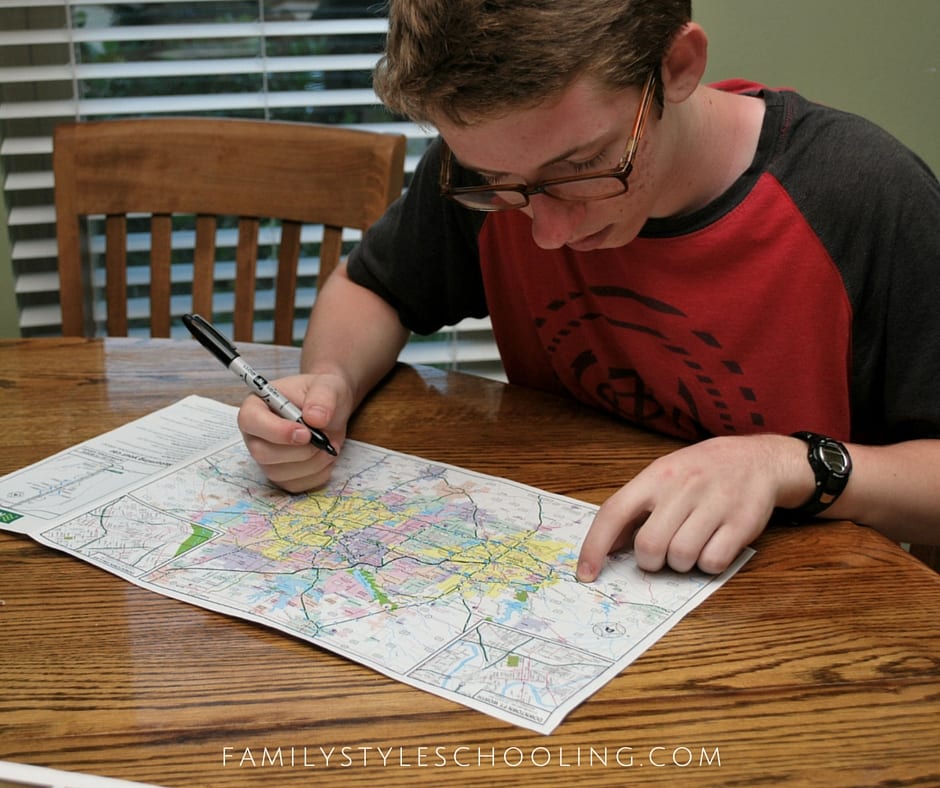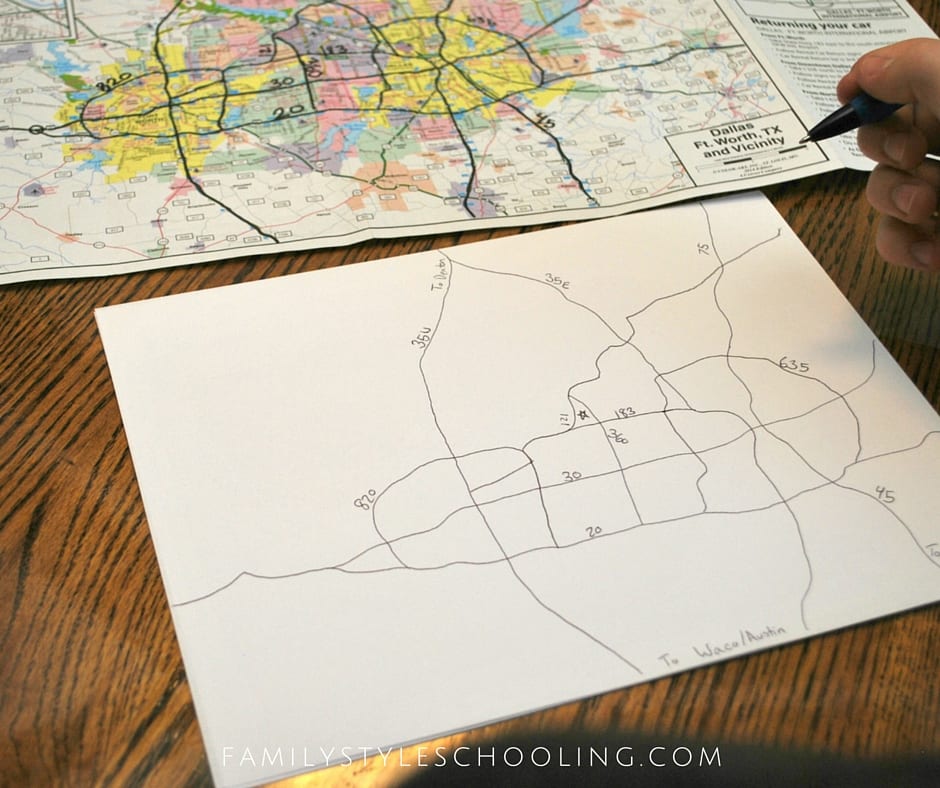Orienting Your Teen Driver to Their City
I'm about to have a teen driver on my hands, and I'm pretty sure he has no idea how to get anywhere. When I was a kid, I loved to practice telling my mom how to get places. As I prepare to train my son to drive and send him off into the world, I want to know that he won't struggle getting around....and not just because he has a GPS system or Siri to tell him were to go.

You might think that if your teen driver has a GPS or a smart phone, then orienting them to their city is pointless. However, when you're unsure of where you're going, you are a much more dangerous driver. In addition, technology isn't reliable, and I'd rather my son have a general idea of where he was than get lost because his phone died.
So here are some simple steps to help give your new driver confidence in their navigational skills.
Step 1: Practice Observation
Part of the challenge of teen drivers today is that they have a little gadget connected to them 24/7 - a smart phone. We didn't have these when I was first learning to drive! When we're in the car, my son is happy to be driven around while he plays on his phone. So the first step is to put the phone away while we're in the car.
Look up!
This is great practice for when they start driving. If their natural habit is to have their phone when they're in the car, why will it change once they're behind the wheel? By taking their phones away early, they'll get into the habit of being phone free in the car and learn a little while they're at it.
Step 2: Pop Quiz
Typically there are two types of navigators: landmark navigators and street name navigators. While it's good to recognize landmarks, it's not enough to know that the street they need to turn on is near the McDonald's. Everything starts to look the same once you've gotten a little turned around.
Start with identifying the major streets around you, and every time you get in the car, quiz them. Ask simple questions to help keep the info fresh on their minds. The more they have to recall the streets around them, the easier it will become. Hopefully, they'll also start observing more, and the navigation woes will dissipate.
Mom: What street are we on?
Son: Harwood
Mom: What are the major streets that run parallel to Harwood?
Son: MidCities Blvd, Glade, and Hall Johnson
Mom: What major highway runs through them?
Son: 121
These questions might seem super simplistic, but knowing the basics are the foundation for successful navigation.
Step 3: Draw Maps
We learned in Challenge A that the best way to learn geography is to draw it. It's amazing what drawing does for practicing observation and quizzing material. We got a city map from AAA (they give you free maps if you're a member). You could also print out a Google map of your area to study. My son took a sharpie and drew out the major highways.

As he highlighted the major highways, he wrote down the numbers that name them. We're going to use this "big picture" drawing to copy throughout the week until he knows the major layout of the highways around us.

Over the next couple of weeks he'll be reproducing just the major highways on this map (the ones he traced in sharpie). When he gets really familiar with these roads, we'll add more details to his map learning.

Step 4: Practice, Practice, Practice
If you think your child is not a natural navigator, then you need to just practice more. It's not something that is impossible to learn, but it will take time.
Repetition will lock the information into your teen's memory, and they'll be ready when the time comes to navigate their way safely home.
How do you help your teen driver learn their city?
I'm linking up with the iHomeschool Network today as we share ideas for teaching without a curriculum. Click the image below to find more great articles.
Betsy Strauss is an unexpected homeschooler, mother of three, who is in a relationship with a sweet man for life. She loves reading books, drinking coffee, and learning anything with her kids.


